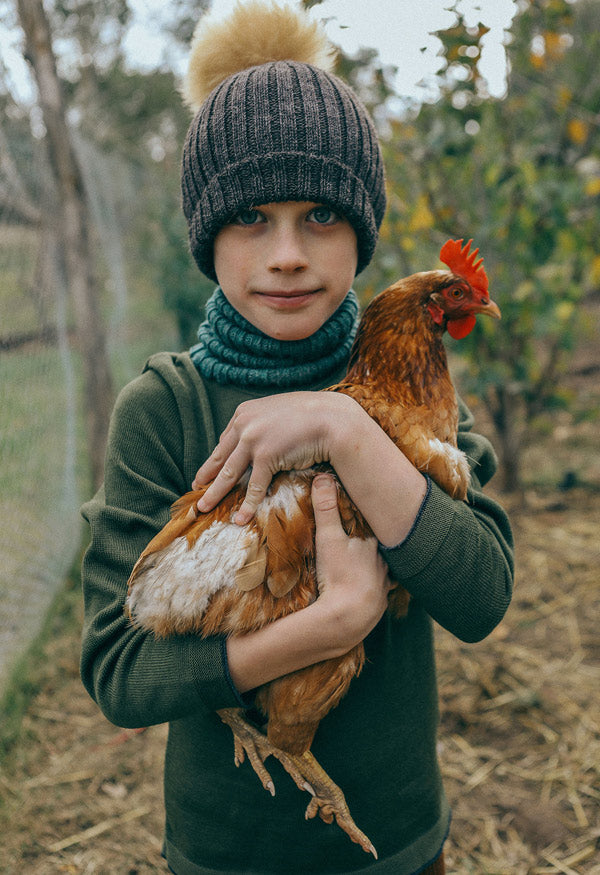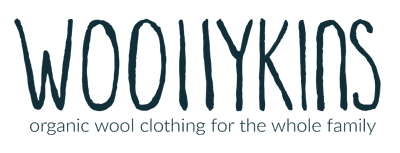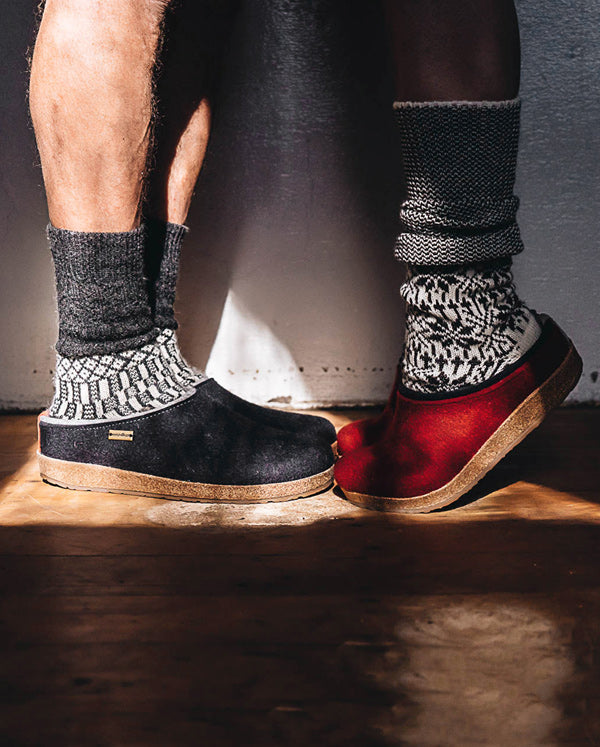Your Cart is Empty
Spring has Sprung🌱NEW Summer Socks 🧦 Shop Cosilana organic basics🐑 1st drop Spring reNEWool just in ♻️
A Note to Our U.S. Customers ❤️ FREE shipping Australia wide on orders over $200* Sign up to our Newsletter here
Menu
-
- NEW IN
- Baby/Kids
- Adults
- Wool Care
- Nappies
- reNEWool ♻️
- Brands
- Disana
- Engel
- Nature Baby
- As We Grow
- Kleine Schobbejak
- Bergstein Footwear
- Fairechild Rain Gear
- De Colores
- FUB Merino Knitwear
- Haflinger Slippers
- minimalisma
- Pickapooh
- my alpaca Copenhagen
- Padraig Cottage
- Cosilana
- Hirsch Natur Socks
- Lana Bambini Socks
- UMIFORM
- Kaiser Baby
- Ruskovilla
- Cobbled Together
- Woollykins
- The Laundress Wool Care
- Redecker Cedar Wood Wool Care
- Pure Pure Sun Hats
- Fog Linen Work
- Collégien
- Fibre
- SALE
-
- 0456 389 641
- Login
-
Australia (AUD $)

Spring has Sprung🌱NEW Summer Socks 🧦 Shop Cosilana organic basics🐑 1st drop Spring reNEWool just in ♻️
A Note to Our U.S. Customers ❤️ FREE shipping Australia wide on orders over $200* Sign up to our Newsletter here
Baby/Kids
Adults
Wool Care

Loved clothes last. We want to help you get the best from your Woollykins for years to come.
Nappies
We love Disana's cloth nappy system. 100% organic and plastic-free for natural, toxic-free nappying. We used the Disana system for all three of our babies.
We love Disana's cloth nappy system. 100% organic and plastic-free for natural, toxic-free nappying. We used the Disana system for all three of our babies.

Wool Care Q&A
-
The best solution to avoiding shrinkage is prevention because there is unfortunately no cure. Have a dedicated wool laundry basket and train everyone in your household to only put their wool garments there. Follow the washing and care instructions on the manufacturer's label for best results and if you're not sure how to properly wash wool please ask. If you do use your wool machine cycle ensure you use cold water and a gentle wool shampoo. If you use a warm water wool wash the machine will still rinse in cold which will shock the fibres and cause them to seize up. Wool cycles vary greatly so always use with caution, if you have any issues with the garment due to the washing, unfortunately we can not exchange/replace as there are too many variables to consider. Only use a SLOW spin (400 max with NO rinse!) or press out moisture in a towel and reshape the garment before drying flat. We do not sell Superwash Merino wool which is a chemical treatment. Shrinking/felting a wool garment occurs when the item has been washed incorrectly. It is not indicative of a fault in the garment and there is no exchange/refunds after a garment has been washed.
If your wool garment has noticeably shrunk, you can try following the steps below:
1. Fill your sink with lukewarm water
2. Add 200-300 ml of natural hair conditioner
3. Add your wool and gently stretch it back to the right size/shape
4. Mix 2 tablespoons of vinegar with 4 litres of water in a large bowl
5. Add your wool to the vinegar solution and swish gently to remove the conditioner
6. Hand wash your wool using your usual wool wash routine -
• Soaking the cover/garment for a long time and then washing with too much agitation (soaking relaxes the wool fibres, opening out the shafts on the fibre which then if agitated can cause them to grip each other and felt)
• Changing the temperature of the water while washing, i.e. rinsing in a different temperature water
• Using a non wool wash detergent or conventional wool wash that contains amino acids/enzymes which break down protein fibres
• Spinning the garment in the washing machine to high
• Using very cold or very hot water. Lukewarm is best.
• Wringing the fibres to remove water
• Drying a wool garment over or too close to a heater/fireTo maintain a woollen garment’s shape, you should always reshape the garment after washing - i.e pull it out to shape while it’s still wet from washing, and then lay flat to dry. It is normal for the wool to fluff up a bit on the first wash and this helps the fibres do their job better too.
-
We highly recommend SOAK wash - non-rinse natural handwashing made especially for delicate woollens. Submerge, squeeze and soak garments in a lukewarm bucket of water with SOAK for 15 minutes, squeeze out excess moisture (do not wring), press in a towel or SLOW spin and reshape and dry flat. Do not rinse. Your garments are left clean and smelling as fresh as a daisy.
-
Ox-gall stain remover is simply amazing and works really well on dry organic stains. Apply the ox gall soap quite thickly to the dry garment, massage into the stained area and leave for half an hour or so. Then you can hand wash it out. I have removed really stubborn ground-in stains using this stain remover, it’s rather remarkable! Another option you could try is a decorative patch stitched beautifully over the patch as a feature. Be wary of trying to dye a garment in order to cover a stain. Unless you were to use a very strong synthetic dark dye like a dylon (which we wouldn’t recommend), you will find that dyeing the garment will only further draw attention to the stain, because the stain will take in the dye differently to the rest of the fabric - usually making it darker. Also try our Spray on Stain Remover from Sonett which is also good for stains on delicate fabrics like wool and silk.
-
Merino wool is really good at odour control to a certain point where the constant build up of sweat in the fibres can get a bit hard to dislodge. Odour build up can occur especially in garments that have been repeatedly sweaty for a long period without sufficient airing in between wears so it can happen on your merino thermals or active wear.
These are things we have found work the best thing to remove odour build up under the armpits. 1) Scour the garment like you're preparing it for dyeing, which removes all oils etc and then re-lanolise. The Fibre Scour product by Tantech (in our wool care laundry section) is what we use for scouring before dyeing. Apply a small amount to the armpits and work it in gently with warm water and then submerge the whole garment in hot water with a cap of fibre scour - don't agitate while wet and leave it until the water cools to room temp. Then rinse the fibre scour out in room temp water (or same temperature as the wet garment). Add a dash of white vinegar to the rinsing water.
Then we recommend re-lanolising the garment with the Sonett Wool Conditioner (also in our wool care section). This will replace the lost lanolin and help future odour control as the lanolin in the wool fibres is one of the things that neutralises odours.
Another thing you can try is spraying the armpits with an alcohol cleaner or pure vodka and airing it outside in the cool air for three days. Keep an alcohol spray in your wool laundry and use this spray between wears to help avoid future odour build up. Airing the garment between wears, instead of just repeatedly wearing it until it needs a wash, also helps avoid a build up of sweat.
-
Pilling can be exacerbated by dryness. Wool can dry out through washing or time or when living in indoor heating at lot which can be a bit of a problem for knits in the height of winter, and this dryness can cause static and friction. Babies/Children wriggling around on the floor on carpet etc can make pills appear worse as they pick up dust into the mix also. Under your arms where there is heat and friction can also exacerbate pilling.
The best things for the upkeep of knitwear in our opinion is the Wonderbrush and/or the Fabric Shaver. The tiny Eezy comb is only suitable for finer knits like the Fub fine knits or Engel thermals as it’s too small to tackle big pills. The Super Eezy Comb will help to remove big pills but you’d have to make sure you use it on a hard flat surface and keep the fabric taut. Pull down and run it along the direction of the knit. Do it in sections until you remove the big pills and then finish with the fine Eezy comb or fabric shaver.
The Wonderbrush is our favourite thing though. We love the Wonderbrush because it’s quick and also removes dirt and so I give the kids clothing a once over with that and then I might go over it with the Fabric Shaver if needed.
The Fabric Shaver is amazing and restore knitwear to new again but it can be time consuming for a big garment. So if very pilled I would use the Wonderbrush or Super Eezy Comb first and then go over it with the Fabric Shaver.
The great thing about the Wonderbrush is that you can also use it as a clothes brush to remove dirt and mud on wool (when dry) and also around the house for pet hair and furnishings.
Once you’ve removed the pills on a garment, it shouldn’t continue pilling, it might do it a couple of times but can be very dependent on conditions.
To reduce dry/static in wool you can give them a wool care treatment with the Sonett wool care conditioner to upkeep their lanolin content and stop the wool drying out. You can even use a natural unscented hair conditioner and add in some 100% lanolin.
Wool is like hair - they both have a keratin protein structure - so it needs care to keep it soft, supple and healthy. Loved clothes truly do last.
-
If your Classic 50 Fabric Shaver won't turn on it is probably down to a simple re-assembly issue. When you take it apart to clean it out, sometimes when putting it back together the front cover (the bit that screws off) gets cross thread - it's a fine screw thread so it's easy to do. Simply try taking off the front and carefully screwing it back on taking care that it feels properly aligned. There is a safety switch that means you can't operate it unless it is correctly installed. In 99% of all cases this has been the issue. I've had mine for over 6 years now and used it excessively. That is why we sell this one at Woollykins as we have found it to be really reliable plus we love the fact that you can order replacement blades so that after a few years of use you can keep it in top working order.
-
Shedding is something that can happen initially with good quality organic wool fleece but it usually doesn’t persist. The formation of lint on fleece articles that are manufactured from wool from certified organic sheep and have no chemical finish cannot be completely avoided. With conventional products, the ends of the fibres are treated with special film-building substances such as acrylic or vinyl polymers to reduce the formation of lint and little knots (anti-pilling finishes). For ecological reasons, we do not stock products that these finishes. It is inevitable that the care of organic wool fabrics also includes the occasional removal of lint.
Washing does not always help to get rid of the lint. If shedding persists, you can gently rub the item down with a rough towel to remove any loose fluffy layer. Follow it up with another gentle hand wash and that should do the trick. You can also try placing the item in the dryer at a cold temperature. If you have a lot of wool garments we highly recommend the Classic 50 Fabric Shaver which is an electrical device that is very effective at removing pills on your clothing which makes them look as good as new. -
Because they have no synthetic fibres at all, all wool socks will eventually wear a hole in the spot your walk on the hardest. How you walk and how hard you are on your feet will determine how long they last. What’s great is that quality all-wool socks respond really well to darning, which reinforces the area that is wearing through and can make them last and last. Most socks use nylon, but we like to stock only pure natural fibres that are completely biodegradable. They will last well if looked after and darned when needed.
We have put together a complete darning kit and darning mushrooms for this purpose because that’s the beauty of all our products, with a little care they will last the test of time without being detrimental to the environment in their material use and production. Here's more darning and mending inspiration from us. -
Try to deal with snags straight away to avoid them catching and pulling further. The best way to deal with a snag is to try to ease the thread back in as much as possible by stretching the fabric in all directions around the pulled stitch which helps it get back into position into the fabric. When you’ve done all that you can with that, you can just poke the thread through with a chopstick to the back of the fabric or in between any layers of fabric. Knitted fabric is usually only prone to snagging when new because the yarn is all newly knitted and still smooth and so the fabric can be prone to pulls until they stitches have been set – usually by washing/steaming. A small snag when dealt with in the manner above will stop it being pulled further and the thread breaking which can then cause a hole to form. For fine fabric pulls we recommend the Snag Repair Needle. But for new knitwear - if you've managed to get it caught and a long thread has been pulled out, follow this tutorial to get that thread back in order. It's so worth the short amount of time it takes to do so.
-
When the weather starts to warm up and your wool clothing isn't getting as much frequent use it's time to implement your moth safety strategy.
Knowing when they are starting to become active again will tell you when to start putting away less used items. We put moth traps out from the beginning of Spring and when we see the moths are active then we’ll ensure that any wool clothing not being used frequently gets dealt with to prevent damage. -
Before putting clothes in storage do the following:
Wash all woollens well, treating any stains etc (moths particularly love food spilt and body oils on clothing), if you're a real wool fanatic then give them a wool conditioning treatment to restore any lost lanolin and buzz off any pills. We also like to mend any holes prior to storing so that come Autumn, everything is ready to wear.
-
Yes! Once they are clean and dry put your woollens in clean paper/plastic freezer bag and place in freezer (-18 degrees or less) for 2 weeks. The freezing kills any moth larvae that may have already been deposited on the garments – if you pack items away that have eggs on them and put them in a dark, undisturbed place with their favourite food, they will hatch and have a feast!
-
After you've washed, dried and frozen your woollens, remove them from the freezer bag and place inside a cotton storage case like our Northern Olive Organic Cotton canvas cubes or a pillowcase (tight/close weave like poplin etc), neatly folded, with a cedar block or cedar sachet. Zip up or wrap the pillowcase around the garment or tightly roll up the end up to make sure nothing can get inside.
-
Besides storing your woollens properly, other general precautions include taking outside items hanging up inside your wardrobe and shaking them out once a month, moths dislike being disturbed. Vacuum regularly around the bottom and edges of wardrobes and any shelves. If you add anything to the storage cases that hasn't been treated in this manner you might contaminate the other pieces so take care to maintain this best practice.
Wool Care FAQ
Holes, Snags and Shedding FAQ
Moth Protection FAQ
Subscribe
Sign up to get the latest on sales, new releases and more …

Join Us Wool Lovers!
Subscribe to our newsletter for early access to pre-orders and sales, wool care tips and new launches.
Our popular pieces come in and out regularly, use the Notify Me feature on Sold Out products to find out as soon as a piece is available again.

